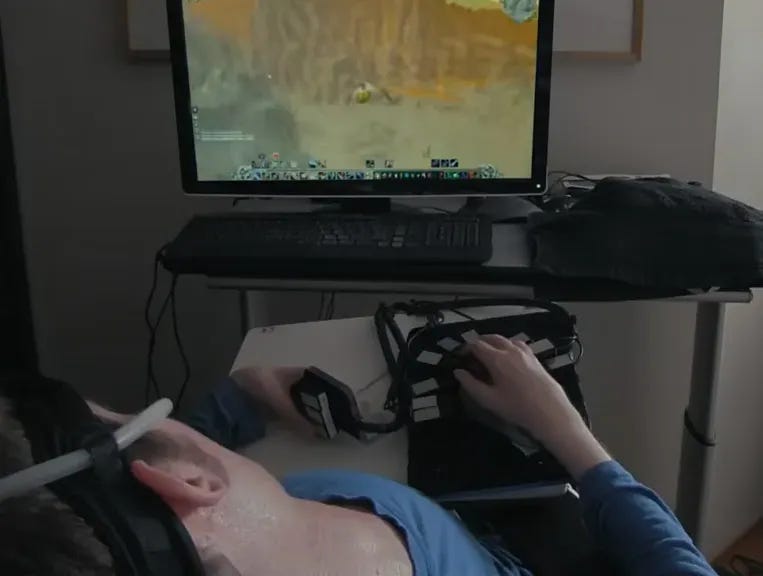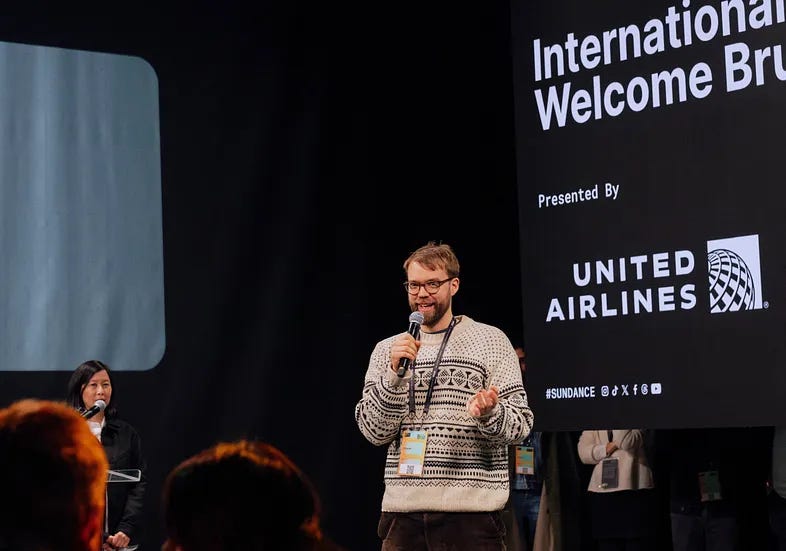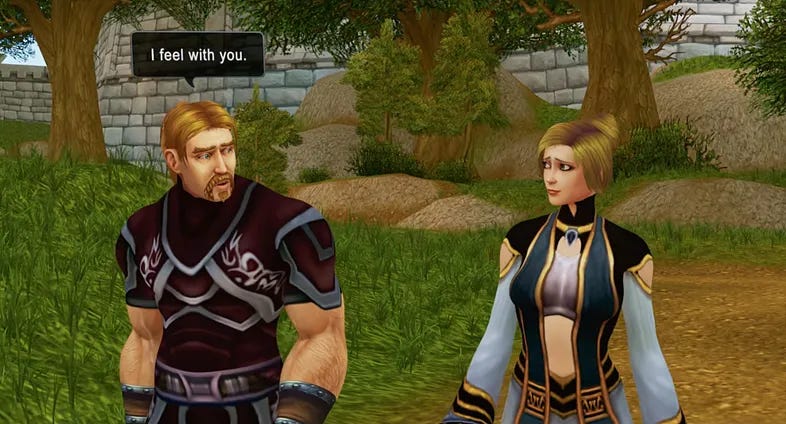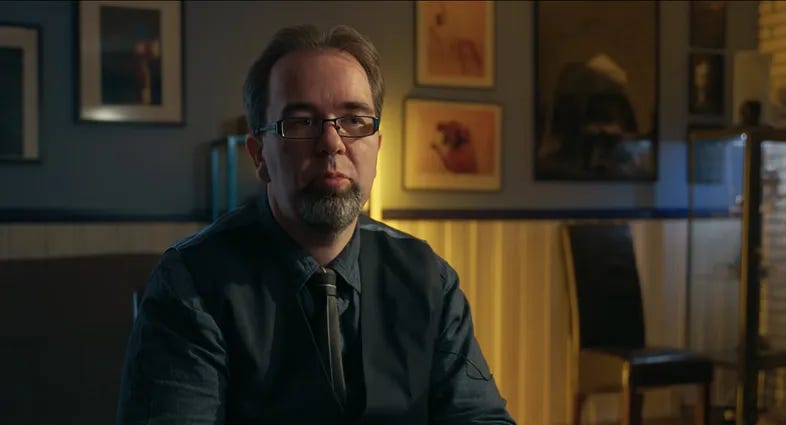A Living Memory in a Virtual World
An interview with Benjamin Ree, the Norwegian documentary director behind The Remarkable Life of Ibelin.
The Norwegian documentary film The Remarkable Life of Ibelin has been making waves in the film industry this year, garnering multiple prestigious awards at international film festivals. Among its accolades are Best Director, Best Documentary, the Freedom Award, the Young Audience Award, and Best Editing. With such an impressive track record, it’s reasonable to predict success at the upcoming Academy Awards. But what exactly sets this film apart?
The documentary provides a powerful exploration of the social dimensions of gaming culture, centering on the life of Mats Steen, a young Norwegian who left a lasting impression on those who knew him through the online world of World of Warcraft. Despite battling Duchenne’s muscular dystrophy, a degenerative condition that claimed his life in 2014 at just 25, Mats’s warmth and ability to forge profound relationships make it nearly impossible for viewers not to feel emotionally connected and inspired.
In recent years, many popular game universes have transitioned to the big screen, but nothing quite compares to this. Through Mats’s story, we experience a poignant blend of home videos from his life, seamlessly interwoven with stunningly animated reenactments of his digital adventures. The result is a masterpiece that is as heart-wrenching as it is beautiful.

Ibelin premiered at the Sundance Film Festival this year, taking audiences on a deeply personal and moving journey through Mats’s life. The film showcases the profound impact he had on his online friends and how he connected with people across Europe through the gaming world, where he spent much of his time. Shortly after its debut, the documentary was acquired by Netflix, where it is now available for viewing.
Meeting Director Benjamin Ree
In an interview I conducted with director Benjamin Ree, a man with a personal connection to Mats and his family, he described Mats like this: “Mats had an immense impact on many people’s lives from within his gaming universe, where, despite a challenging illness, he became a treasured friend and a supporting helper for many people.”

Can you tell us a bit about the backstory of the documentary itself?
The story behind the film began in the late 1980s, when Mats Steen’s parents and mine became friends. Although my family eventually moved away, and our families lost touch, fate brought us back together years later when Mats’s uncle became my teacher and introduced me to filmmaking. While watching old family videos, I was astonished to discover that I had unknowingly appeared in recordings with Mats — a connection I hadn’t realized existed.
I also came across a photo in a family album of Mats and me sitting together in a playpen as children. However, it was an article about Mats published in 2019 on the Norwegian Broadcasting Corporation’s (NRK) website that truly inspired me to create this documentary.
The 2019 article became the most-read piece ever on NRK’s website, deeply moving countless readers, including the filmmaker himself. “It was the most touching and powerful feature article I have ever read,” he reflects.
As the journalist writing this, I can personally attest to the emotional impact of that article — I still vividly remember where I was when I first read it and the overwhelming flood of tears it brought.
What inspired you to turn this story into a film, especially since it already seemed so perfectly suited to a written format?
Although the story initially seemed more suited to a text format, I reached out to Mats’s uncle, who revealed that Mats’s father had documented his son’s entire life on film. This gave us a wealth of visual material to work with. Additionally, there were numerous videos and logs from the gaming world, including around 4,000 pages of transcribed dialogue from World of Warcraft — almost like a ready-made script — as well as a blog Mats had written.
Have you played World of Warcraft yourself?
I had played many of the same games as Mats, but by the time he started with World of Warcraft, my focus had already shifted to film. It wasn’t until I began researching for the documentary that I truly delved into the game and met Mats’s online friends within its virtual world.
Ree faced numerous challenges in making the documentary, particularly in working with the extensive visual and textual material. This included game-enhanced animations and an overwhelming 42,000 pages of forum logs, which were thankfully condensed to a more manageable 4,000 pages for the project.
“We didn’t have a ‘Plan B’ and took a significant risk by using game content without seeking approval from Blizzard Entertainment, the owners of World of Warcraft,” Ree admits.
Making the movie without contacting Blizzard first is a really ballsy move?!
Yeah, we took a huge risk! After completing the film, we reached out to Blizzard Entertainment and arranged a private screening for them. When the lights came on after the showing, there wasn’t a dry eye in the room.
They were incredibly supportive and gave us permission to proceed without requiring any editorial or creative changes. On top of that, they granted us access to unique game models, allowing us to make the recreations even more authentic to the original.

How has the film been received so far?
The response from audiences has been overwhelmingly positive, with many deeply moved by the film’s emotional impact. Viewers often share how it inspires them to reach out to loved ones, expressing their appreciation and affection. At its core, the film explores the profound value of Mats’s life and the impact he had on others, emphasizing a universal message about the inherent worth of every life.
Despite his severe illness, Mats connected with friends across Europe, offering meaningful support and forging deep bonds. The film serves as both a tribute to gaming culture and a bridge to a wider audience, making its themes accessible even to older generations.
From the outside, the gaming industry can appear incomprehensible and exclusive, but The Remarkable Life of Ibelin offers a fresh perspective, uncovering a different side of the gaming world. The film reveals the rich, emotional landscape behind computer screens — a world of meaningful connections, a strong sense of community, and the formation of enduring friendships.
Mats, who spent most of his life confined by his illness, made a powerful choice as his final wish: to share his story with the world. Once someone who kept his condition private, he became an advocate for people with special needs, using his public blog and an informational video for Norway’s welfare agency, NAV, to raise awareness and inspire others.
This movie is a humanistic project about the value of a life. When people feel the urge to hug each other and show how much they care after watching it, it means we’ve achieved one of our goals.
“This film is a deeply humanistic project about the value of a single life,” says director Benjamin Ree. “If viewers feel the urge to hug their loved ones and show how much they care after watching it, then we’ve achieved one of our most important goals.”
The documentary not only honors a life lived largely in the virtual world but also shines a light on the gaming community — a culture often misunderstood and undervalued. It masterfully balances the art of storytelling, presenting a complete human narrative that embraces both its uplifting moments and its challenges.
As the interview concluded, the filmmaker reflected on the deeply personal significance of the project: “Completing this documentary has been an incredibly emotional journey… I’ve learned so much about life, lessons that I’m still processing.”
The Remarkable Life of Ibelin stands out as more than just a film about an extraordinary life lived in both the real and virtual worlds. It’s a story that inspires audiences to cherish the value of community, the strength of friendship, and the importance of expressing love and care to those around them.
The film’s distinctive perspective and powerful message illuminate the gaming community’s capacity for inclusion, support, and inspiration. It stands as a tribute to a phenomenon that, for countless individuals, represents a deeply meaningful and valuable part of their lives.
To honor Mats “Ibelin” Steen’s memory, you can visit his in-game memorial in World of Warcraft. Blizzard Entertainment has created a headstone modeled after his real-world grave, located on a small island in Crystal Lake, Elwynn Forest. The inscription reads, “Deeply missed, never forgotten,” mirroring the tribute on his actual headstone.








